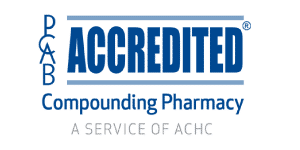Topically delivered drugs should be handled very carefully as incorrect dosage can affect a patient’s health and cause serious side effects. The effectiveness of the drug can also get compromised if the drug is not handled carefully.
When the topical drug is applied to the skin tissue, most of the topical drug delivery systems have a systematic or local impact when reaching the body’s circulation system. The correct formulation is very important for a successful topical drug delivery system.
What is a Topical Drug Delivery System?
A topical drug delivery system is a way to deliver medication to the body through the skin. The medication is typically applied onto a selected part of the body, from where it gets absorbed into the body and into the bloodstream. Gels, lotions, powders, transdermal patches, foams, creams, and ointments are some of the common forms of topical medication.
What are the 5 Benefits of A Topical Drug Delivery System?
1. Substitute for Oral Administeration of Medicine:
Many patients struggle with oral drug administration of medicines like pills or tablets. Some risk vomiting, while others find it difficult to swallow tablets which is a common problem among infants or younger kids who aren’t used to swallowing tablets. Parents often find it very hard to get their kids to take the medication in the form of pills & tablets. This ultimately leads to wastage of medicine and slower recovery times. On the other hand, usage of topical medication helps parents to avoid all these problems and help their kids to take the medication and recover quickly.
2. Low Risk of Medication Abuse:
Medication administered via tablets or injections can easily be abused. Drug abuse is a far too common occurrence among patients, specifically with pain management medications. Such abuse can result in addiction. On the other hand, administering medication via ointments or creams greatly lowers the risk of such abuse.
3. Low Risk of Gastrointestinal Difficulties
Oral medication in the form of tablet and pills can cause a variety of digestive side effects as the rate of absorption of medication, differ from patient to patient. An individual who encounters these often painful side effects may opt to terminate their medication altogether.
A topical drug delivery system overcomes this limitation, as the medication is applied to the skin and directly gets absorbed from the skin into the bloodstream, improving the patient’s recovery process.
4. Super Easy Administration Process:
Every person has a fear of something be it, infants, or adults. The most common fear among people is the fear of injections or of swallowing a tablet. However, few are fearful of rubbing an ointment on their skin. For this reason, the doctor or physician finds it easier to inspire their patients to take their medication in the form of topical drug delivery systems like transdermal patches, cream, ointments. etc. As a patient, you will also find it easier to manage the use of topical medication at home compare to medication in the form of pills, tablets, and injections.
5. Minimizing Hospital Congestion:
There was a time when hospitals administered many medicines in the form of injection and used to admit their patient for this purpose, leading to maximum bed capacity. Today, if the patient’s condition isn’t serious, he/she can walk into a hospital and walk out again in a short time with his/her topical medication. This leaves hospital beds free to cater to far more critical & serious cases and reduces both patient medical costs and hospital resources.
Conclusion:
Topical drug delivery systems have absolutely changed the way we look at medication. More and more doctors, physicians, dermatologists, podiatrists, etc., and various other medical institutions are adopting this form of medicine to improve their service to patients.
Many doctors are prescribing compounding medication in the form of a topical drug delivery system which helps them to control the ingredients and dosage used in the medicines and which can be customized as per individual patient’s needs.
This is largely because topical medication has more advantages than drawbacks and administration of medicines through the route of skin is more ideal, as it produces both systematic and local effects.





